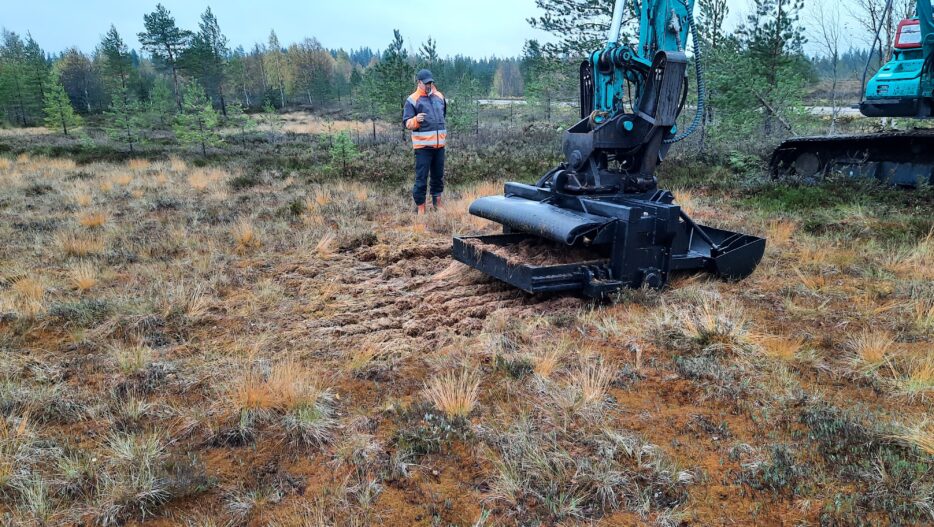
The new collection method enables the continuous cultivation of sphagnum: Crop rotation only 5-10 years
Sphagnum moss has been used for decades in small quantities both as a material for growing media and as animal bedding and insulation. Moss has excellent absorbency and has many special properties, such as cleanliness and antiseptic, as well as the ability to prevent plant diseases, which make it an excellent raw material for various growing media. Increasing even a few percentage points to a growing medium containing compost and wood fibre, for example, significantly improves the properties of the growing medium.
The problem with the utilisation of moss has been the difficult collection conditions and the relatively slow renewal of the collection areas. The traditional machine collection method, in which almost the entire layer of moss is removed from a depth of 20-30 centimetres, makes it possible to collect again from the same area in 20-30 years.
Neova has been testing different collection methods for almost 20 years. The collection methods tested include winter collection with an excavator, pick-up harvesting when the ground is unfrozen, and collection with a special suction head. The challenges with different methods are to achieve sufficient yield and economic profitability and to regenerate the moss quickly enough in the areas where the moss has been harvested.
Now Neova has developed a new kind of collection method, in which moss is removed in narrow stripes about 10 centimetres wide at a depth of about 10 centimetres. During the collection, moss is collected from about a third of the area, which means that 2/3 of the collection area remains unchanged between the stripes. The collection in this way provides excellent surface moss, increases the growth and regeneration of moss so that the same area can be collected again every 5 to 10 years. By doing so, only the amount corresponding to new moss growth is collected.
According to Director Pasi Rantonen, the method has been tested in 2024, among others in Hakoneva and Jääräsuo. According to Rantonen, the results are encouraging. “We believe that this method has a good chance of success in Finland. ” We have hundreds of thousands of hectares of drained peatlands from which moss can be collected using this method, and a sufficiently fast crop rotation guarantees that the material is renewable even at the most critical examination. The collection is also remarkably natural. When the majority of the collection result remains unchanged, the hydrological balance of the collection area will not change, and the peatland plants and the fauna of the bog will also remain almost unchanged,” says Rantonen.
Next summer, the tests will continue in several peatlands.
More information: Accelerated crop rotation for sustainable production
More information:
Miika Huilla, Specialist, Neova Oy, tel. +358 50 493 0626
Päivi Peronius, Neova Oy, Director, Peat and New Materials, tel. +358 40 516 8613